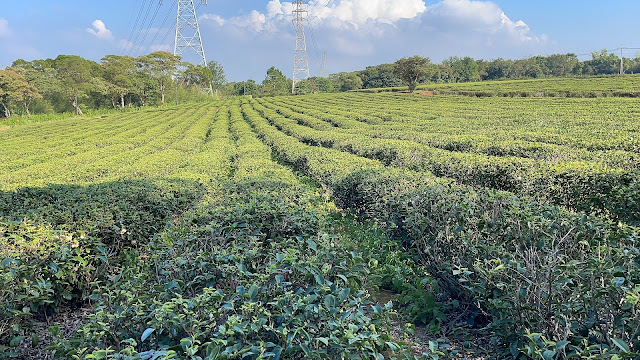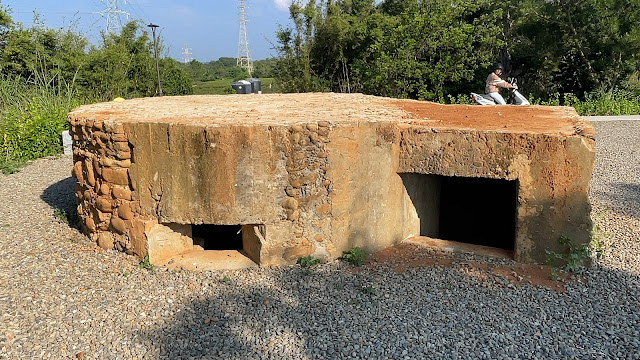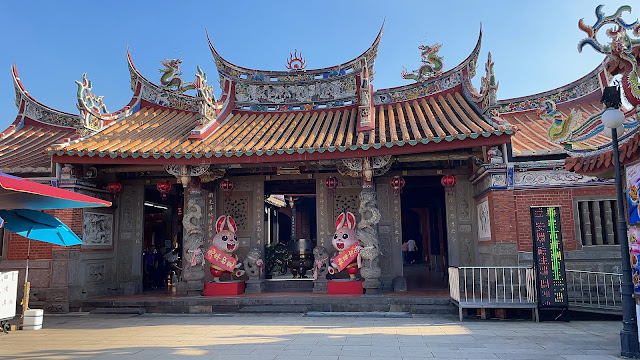
Travel Date: 2023/11/04
It had been a long time since we last visited Hukou, and while we were in the area, we decided to explore the Persimmon Farm in Xinpu and include a visit to Hukou. In my memory, the old street was incredibly beautiful, but I didn't recall it being this long. I feel it's one of the longest and best-preserved old streets in Taiwan. The weather today was really nice.
We drove along a mountain road from Xinpu to Hukou, passing numerous tea farms. Although the view might not compare to Alishan or other high mountains, I find the tea farms in Hukou quite picturesque. Along the road, there were plenty of cypress trees, though it wasn't their season, and they appeared lush green at this time.
Historically, Hukou served as a military base. Along the nearby roads, you can spot a few old tanks and bunkers, and there are several trails in the area.
The old street was bustling today, with at least six tour groups present upon our arrival. It was challenging to capture videos or pictures due to the crowd. If you appreciate the architecture of Hukou Old Street, I'd also recommend visiting Daxi Old Street. We had planned to visit a few months back but faced difficulty finding parking in the town, so unfortunately, we couldn't make it that time. I hope to revisit soon to take better pictures and perhaps make a video.
For more insights, you can check out a post from 2018: HERE
Additionally, explore the Persimmon Farm in Xinpu: HERE
Hukou Old Street (湖口老街)
Hukou Old Street, built during the Japanese era around the 1890s, exhibits Japanese and Baroque architectural styles. The rise and decline of this old street is closely related to the railway. The railway in Hukou was established in 1892, fostering local development. Although the railway route from Taipei to Taoyuan changed significantly during the Japanese period, the section from Dahukou to Hsinchu remained largely the same. In 1908, the entire line was completed, transforming Dahukou into a commercial town in Hsinchu. Subsequently, in 1916, Hukou Old Street was constructed to the southeast of the station.
The Japanese believed that the slope of the road between Hukou and Yangmei was too steep, causing instability in the railroad. Consequently, the Hukou station shifted closer to the coast due to the newly completed Ocean Line. The construction of the new railroad contributed to the decline in commercial activity on the street.
The railway divided Hukou into Old Hukou and New Hukou. Old Hukou features an old street, temple, church, and an old theater. New Hukou, situated around the station, comprises modern houses. In Hukou, all the old buildings were preserved, presenting a similar style to Daxi Old Street. The nearby temple displays pig decorations during the Chinese New Year.
At the end of the street stands the San Yuan Temple. In 1904, two individuals donated land and raised funds to build the temple. Despite funding difficulties, the project was completed in 1919. The temple is dedicated to the Three Officials: water, earth, and heaven. In May 2001, this Temple was declared a county monument.






































0 komentarze:
Post a Comment